Wandering around The Royal Exchange in The City of London on a quiet Sunday afternoon I happened to notice what might be the tiniest light well I have ever seen. I'd say its approx 40cm x 30cm. It is one of many interesting details around this island of commerce...

But before I show you some nice things, let's consider the window display next door at No.31 where unsold pies and pastries were festering and going stale in the window. Ugh.
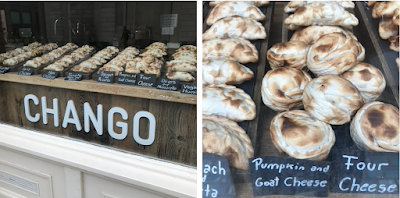
I have often mused what happens to all the unsold produce of this kind. How do companies calculate how many units they should make so as not be left with so many unsold? It's clear by this demonstration that they clearly have their sums wrong. Bad calculations like this mean the fresh unit price is often too high being. I personally think it's outrageous to charge over £3 for one of these little snacks. I've since seen another branch of Chango also displaying produce that's past its use-by date. For the life of me I cannot understand why they think this is a good idea. It looks lazy and ugly. They should bake less pies, give the unsold ones to the homeless and display photos in the window when the shops are closed.
Now I've got that off my chest, let's look at the old hand-painted door numbers around The Royal Exchange at shoulder level, some dating from at least 100 years ago:
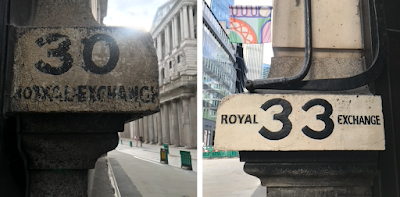
Number 33, is today another bun shop (but with no unsold produce in the window) at it still sports the signage and fittings from when this used to be Botterill's cigar shop. The company had been trading from here and at 70 Cheapside since at least 1852 under the name of G. Botterill. I think fair to assume that H is the son. This small shop interior has many authentic fittings:

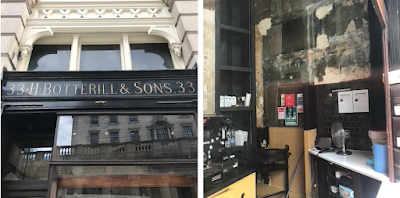
It was still a cigar shop until October 2016 as shown here when it was J. Redford & Co.
Around the corner, in Cornhill, there are two lovely hand-painted number nines:
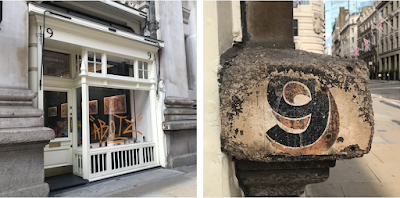
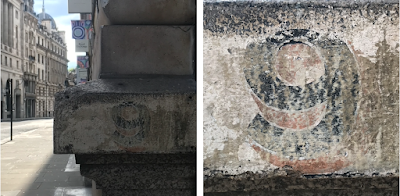
Then, on the East side of the block, Mount Blanc and Aspinal site within shops that retain some nice windows and fittings, but no numbers:
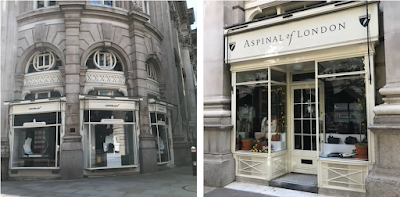
But my favorite shop here is Searle & Co at No.1, on the Cornhill side, where a host of fabulous fittings are still in place – punched metal, polished brass, buffed granite, carved wood, parquet flooring, bronze window frames, and more. Much of this probably dates back to at least the 1880s when this was owned by James Murray & Co, a watch and clock maker. By 1910, Frederick Clarke, also a watchmaker, was here before Searle & Co who arrived took on the shop in 1933.
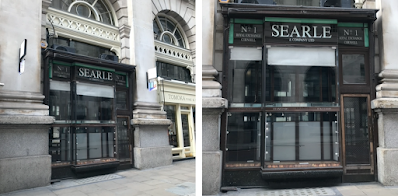
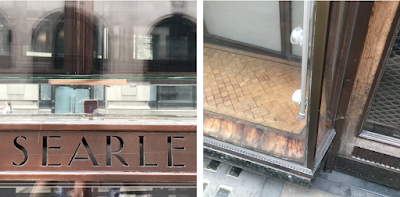
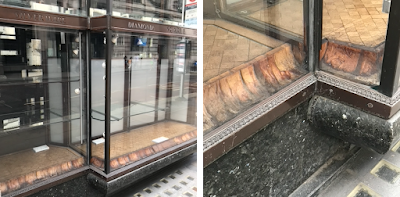
Walter Henry Searle and family had been trading in the City of London since 1893. Sadly, the company closed in 2021 and the stock was sold at auction. Since then the shop has remained empty, as shown in my photos – more info here on Fellows site which includes some interestng history and stories about Searles. Peering inside the shop it's possible to see some of the display cabinets mentioned in that link and an elegantly-designed safe made by Milners:

Let's see what evolves. As with the cigar store, this company has long been a fixture at this site, so it's sad to see them go. It'll probably be turned into another pastries shop.
